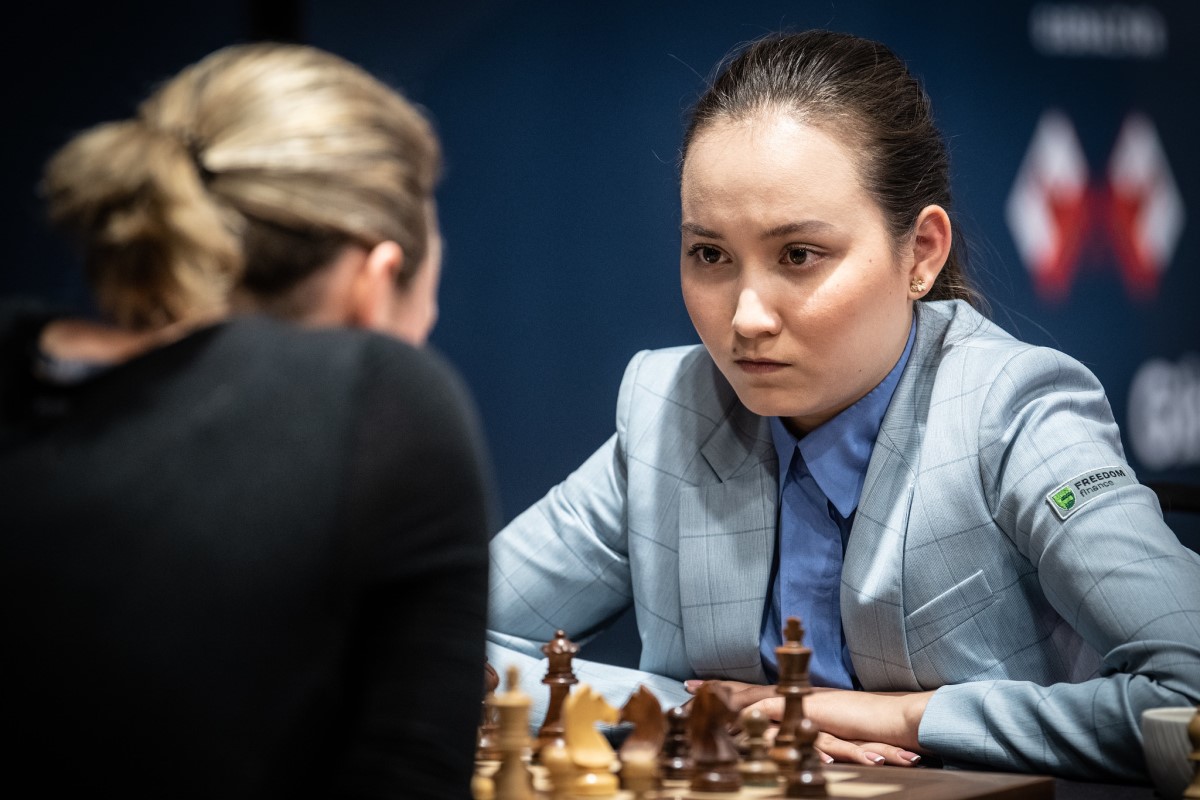A four-player chasing pack
We have enjoyed an entertaining couple of rounds at the outset of the Women’s Grand Prix tournament in Gibraltar. While three games finished drawn on opening day, only one game did not finish decisively in the second round. Zhansaya Abdumalik, who joined the series in the third leg as a late replacement, is currently leading the standings with a perfect 2/2. The Kazakhstani defeated Dinara Saduakassova and Elisabeth Paehtz during the weekend.
Four players stand a half point behind, including 11th seed Gunay Mammadzada, the only player younger than Abdumalik in the field. She is joined in the chasing pack by former world champions Antoaneta Stefanova and Mariya Muzychuk, and world number 5 Kateryna Lagno.
Out of the five, Lagno is the one with the best chances to get a spot in the Candidates Tournament by finishing in the top-3 of the series’ overall standings — the Grand Prix grants two spots in the qualifying event to the World Championship match, but Goryachkina, who is leading the standings by quite a margin, is already qualified as the previous challenger to the crown.
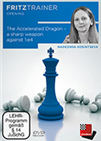 After 1.e4 c5 2.Nf3 Nc6 3.d4 cxd4 4.Nxd4 g6! leads to the so-called "Accelerated Dragon Defense". On this DVD the Russian grandmaster and top women player Nadezhda Kosintseva reveals the secrets of her favourite opening.
After 1.e4 c5 2.Nf3 Nc6 3.d4 cxd4 4.Nxd4 g6! leads to the so-called "Accelerated Dragon Defense". On this DVD the Russian grandmaster and top women player Nadezhda Kosintseva reveals the secrets of her favourite opening.
Kateryna Lagno | Photo: FIDE
In Saturday’s first round, the current leader kicked off the event by beating her compatriot Saduakassova. Surprisingly, this was only the second time the two top Kazakhstani women players faced each other in a classical game. Adbumalik’s passer on the c-file gave her a first full point from what seemed to be a holdable — yet difficult — position for Black.
Black needed to play 38...Nd7 here, as her 38...Kf5 gave White a chance to successfully regroup her pieces, especially her queen — 39.Qa6 h5 40.Qc4 e4+ 41.Kg1 Qe7 42.c6 Ne8 43.Qd5+
 In over 4 hours in front of the camera, Karsten Müller presents to you sensations from the world of endgames - partly reaching far beyond standard techniques and rules of thumb - and rounds off with some cases of with own examples.
In over 4 hours in front of the camera, Karsten Müller presents to you sensations from the world of endgames - partly reaching far beyond standard techniques and rules of thumb - and rounds off with some cases of with own examples.
Note how the white queen’s position has improved, while Black’s knight and queen struggle to find coordination to stop the dangerous passer. Saduakassova resigned two moves later.
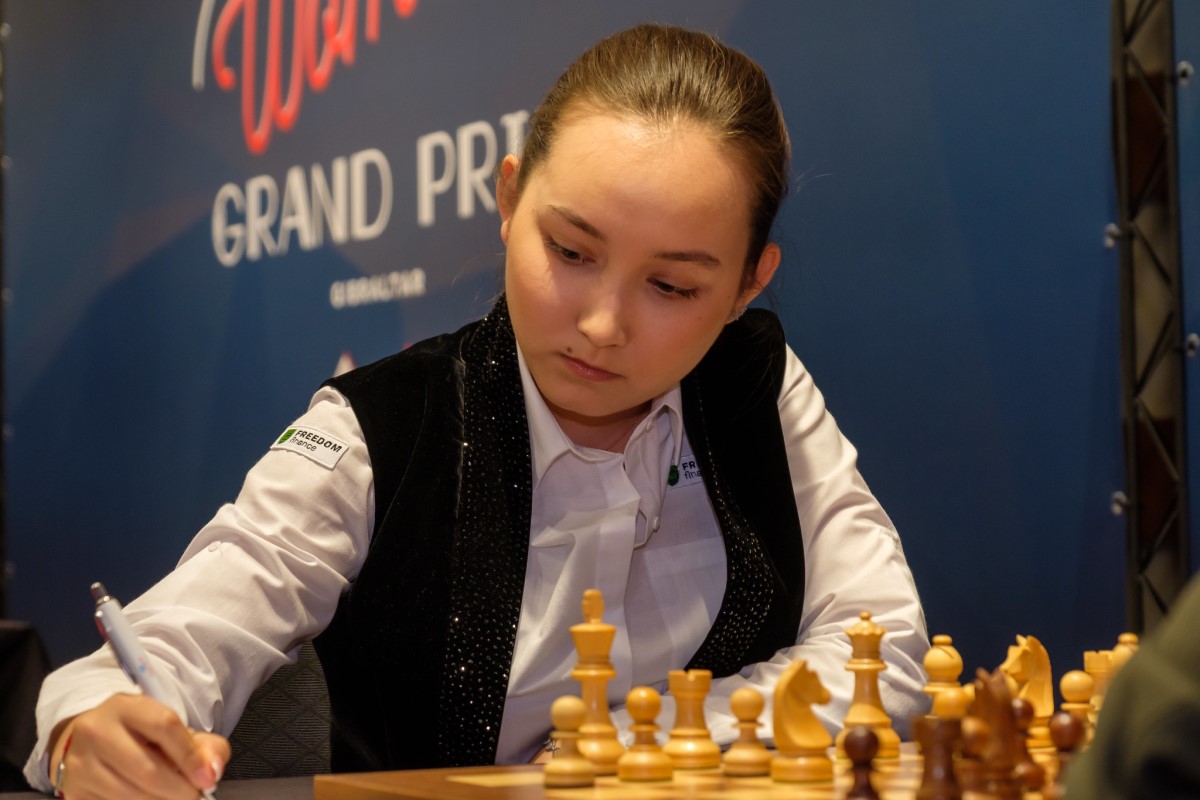
Zhansaya Abdumalik during the first round | Photo: John Saunders
The remaining two decisive games of round 1 saw two players coming back from the dead, as they had close to lost positions at some point in the game and ended up not only saving a half point but, in fact, getting victories on opening day.
First, Valentina Gunina, who barely made it to Gibraltar in time after having difficulties on her journey from Russia, bounced back against her compatriot Alina Kashlinskaya. Later on, in the last game of the day to finish, Paehtz defeated Irina Bulmaga after fiercely defending a position with her king completely open in the middle of the board.
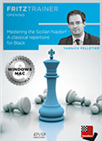 This Najdorf-DVD is suited for the beginner as well as experienced club players. Pelletier presents a classical repertoire that's easy to learn and covers all you need to know about the Najdorf.
This Najdorf-DVD is suited for the beginner as well as experienced club players. Pelletier presents a classical repertoire that's easy to learn and covers all you need to know about the Najdorf.
Already in deep time trouble, after having exchanged blow after blow out of a sharp Sicilian Najdorf, Bulmaga erred decisively by playing 38.Nd2, giving Black a chance to create counterplay with 38...Qc1. In the diagrammed position, 38.Qg4, with all sort of threats, was winning. Perhaps the Romanian feared that after 38...Nc5 Black would manage to untangle, but White, in fact, wins in every line.
Paehtz had now a winning position, which she managed to convert into a 52-move win. The German would later confess, “I’ve aged 100 years today”.
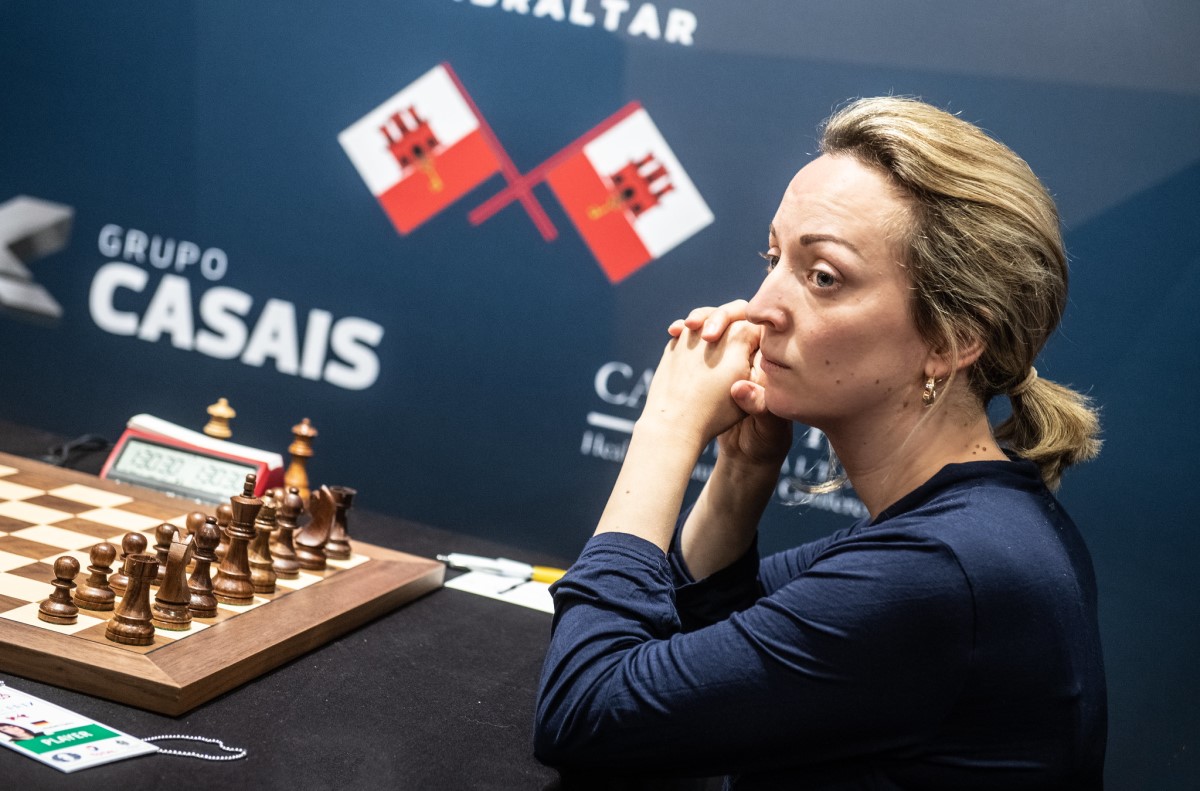
Elisabeth Paehtz | Photo: FIDE
Similar turnarounds were seen in round 2, with Mammadzada and Lagno coming back from behind to score wins on Sunday. Lagno got to play a surprising move when Kashlinskaya carelessly captured a pawn on the queenside.
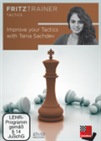 The aim of this course is to help you understand how to make tactical opportunities arise as well as to sharpen your tactical vision - these selected lectures will help to foster your overall tactical understanding.
The aim of this course is to help you understand how to make tactical opportunities arise as well as to sharpen your tactical vision - these selected lectures will help to foster your overall tactical understanding.
Black would have kept the advantage she got out of the opening with 20...Bxf5, but played 20...Qxa3 instead. Lagno had calculated the capture and after no more than a minute and a half played 21.Nxg7 — if 21...Kxg7, White has 22.Bh6+ grabbing the queen.
Lagno was in the driver’s seat and duly converted her advantage into a crucial win.
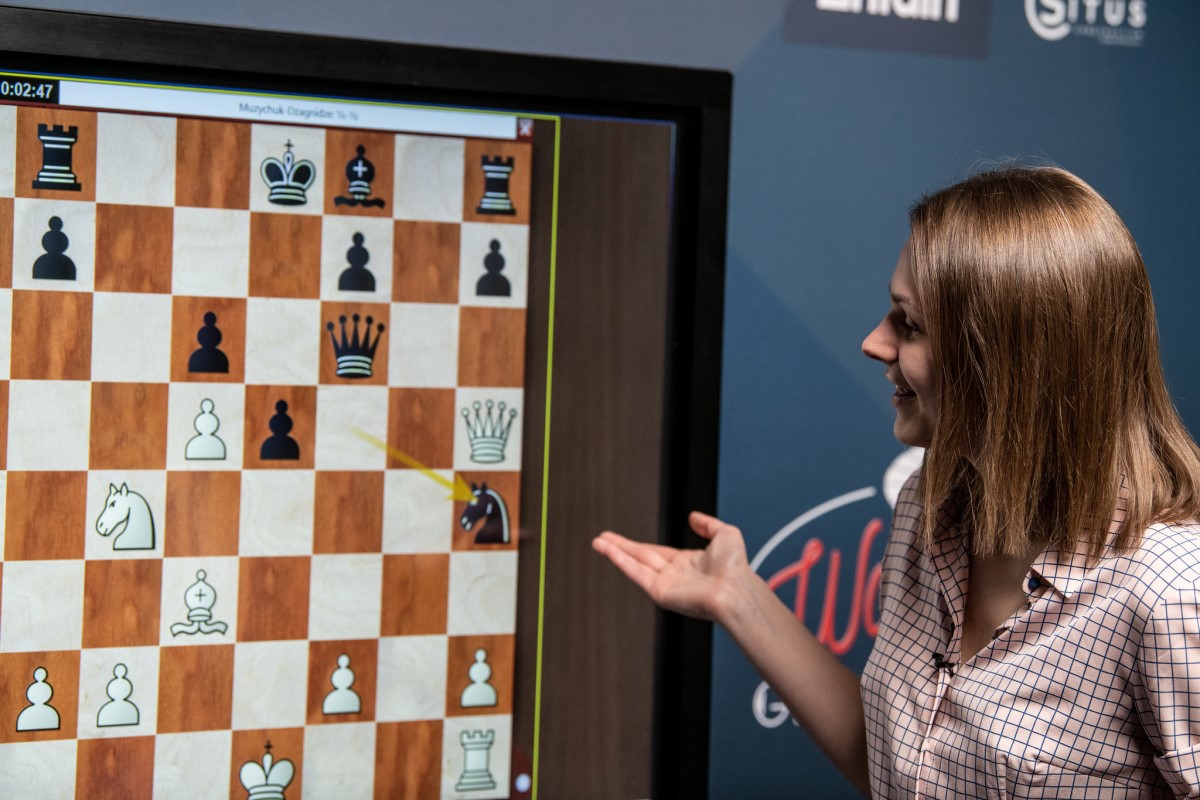
Anna Muzychuk drew Nana Dzagnidze with the white pieces in round 2 | Photo: FIDE
Standings after round 2
All games
Links
